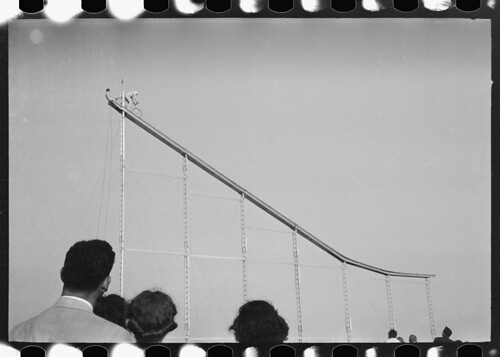
Patent for "...a bicycle-frame so constructed that it is adapted to yield automatically...thereby doing away with the necessity of using pneumatic and puncturable tires..."
Smith, George Washington. Bicycle., patent, March 25, 1902; [Washington D.C.]. (texashistory.unt.edu/ark:/67531/metapth512247/: accessed April 8, 2017), University of North Texas Libraries, The Portal to Texas History, texashistory.unt.edu; crediting UNT Libraries Government Documents Department.The main drawback of bicycles in the U.S. at this time, aside from the continuing rise of popularity of automobiles, was that the tires most commonly supplied on bikes and their associated rims were not easily repaired by owners compared to modern tires with inner tubes. (The rims were relevant since switching to better, more easily repaired tires, required different rims.) As the patent application notes, flat tires were "the cause of great inconvenience to riders." This inventor (George Washington Smith - great name) decided that the main benefits of pneumatic tires was the shock absorbing aspect that could then be replaced by the insertion of what are somewhat like leaf springs in the middle of the bicycle frame. Clever, but perhaps too clever?
One wonders if he really equipped a prototype with solid rubber or otherwise solid replacement tires and tested this out. The pneumatic bicycle tire I suspect is one of those things that is hard to appreciate until you try some alternative. In particular, the amount of shock-absorbing done by a pneumatic tire is easily adjusted by how much pressure the tire is inflated to. A pneumatic tire can easily take most road buzz out of the ride that I think this system would transmit.
Of course the simplest judgment of this idea is rendered by history - while there are certainly some (in fact, many) bikes that have suspensions today, they all have pneumatic tires.

Lars Olsen on Flickr - Orange Crate from back in the 1960s with a suspension but also inflatable tires






